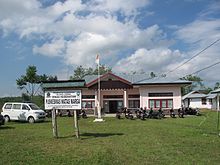
A clinic is a health facility that is primarily focused on the care of outpatients. Clinics can be privately operated or publicly managed and funded. They typically cover the primary care needs of populations in local communities, in contrast to larger hospitals which offer more specialized treatments and admit inpatients for overnight stays.
A Federally Qualified Health Center (FQHC) is a reimbursement designation from the Bureau of Primary Health Care and the Centers for Medicare and Medicaid Services of the United States Department of Health and Human Services. This designation is significant for several health programs funded under the Health Center Consolidation Act.
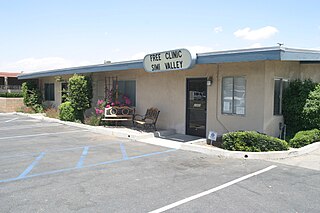
A free clinic or walk in clinic is a health care facility in the United States offering services to economically disadvantaged individuals for free or at a nominal cost. The need for such a clinic arises in societies where there is no universal healthcare, and therefore a social safety net has arisen in its place. Core staff members may hold full-time paid positions, however, most of the staff a patient will encounter are volunteers drawn from the local medical community.

Health Services Los Angeles County, officially the Los Angeles County Department of Health Services, operates the public hospitals and clinics in Los Angeles County and is the United States' second largest municipal health system, after NYC Health + Hospitals.
A public hospital, or government hospital, is a hospital which is government owned and is predominantly funded by the government and operates predominantly off the money that is collected from taxpayers to fund healthcare initiatives. In almost all the developed countries but the United States of America, and in most of the developing countries, this type of hospital provides medical care almost free of charge to patients, covering expenses and wages by government reimbursement.
The Ithaca Health Alliance is a community-based health care cooperative based in Ithaca, New York. It incorporates financial and service assistance models to alleviate health care costs for its members and is a model for cooperative health care reform in the United States. The mission of IHA is to facilitate access to health care for all, with a focus on the needs of the un- and underinsured. IHA sponsors and operates the Ithaca Free Clinic.
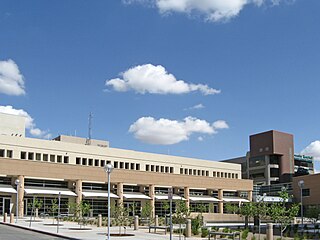
The University of New Mexico Hospital is a public teaching hospital located in Albuquerque, New Mexico, immediately north of the main campus of the University of New Mexico. The hospital is the only Level I trauma center in the state of New Mexico, and also houses the only certified burn unit and designated stroke center in the state. In addition, UNMH also contains the only children's hospital in New Mexico, and is the state's sole source of 13 pediatric sub-specialties. As a safety net hospital, UNMH serves a large percentage of the uninsured and under-insured population of the state. The hospital is the main teaching facility for the University of New Mexico School of Medicine.
University Muslim Medical Association, Inc. (UMMA) Community Clinic is the first Muslim American founded community-based health organization in the United States. Located in South Los Angeles, UMMA has a culturally and religiously diverse staff serving an equally diverse community.
The Sister Maura Brannick Health Center is a primary care clinic located in South Bend, Indiana that focuses on medical treatment for uninsured patients. Also known as the Chapin Street Clinic, the clinic provides health and dental care to those who do not have access to Medicare or Medicaid and cannot afford private health insurance. The Health Center relies on 30 volunteer physicians and around 30 student and community volunteers, along with its one staffed physician and two nurses, to meet the needs of its 600 patients.

A rural health clinic (RHC) is a clinic located in a rural, medically under-served area in the United States that has a separate reimbursement structure from the standard medical office under the Medicare and Medicaid programs. RHCs were established by the Rural Health Clinic Services Act of 1977, . The RHC program increases access to health care in rural areas by
- creating special reimbursement mechanisms that allow clinicians to practice in rural, under-served areas
- increasing utilization of physician assistants (PA) and nurse practitioners (NP)
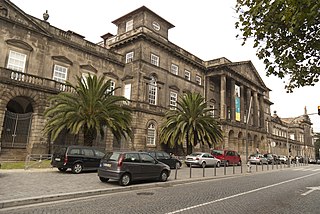
Healthcare in Portugal is provided through three coexisting systems: the National Health Service, special social health insurance schemes for certain professions and voluntary private health insurance. The SNS provides universal coverage, although in 2012 measures were implemented to ensure the sustainability of the service by the introduction of user fees to be paid for at the end of treatments. In addition, about 25% of the population is covered by the health subsystems, 10% by private insurance schemes and another 7% by mutual funds. The Ministry of Health is responsible for developing health policy as well as managing the SNS. The Health Regulatory Entity (ERS) is the public independent entity responsible for the regulation of the activity of all the public, private and social healthcare providers. In 2019 the government proposes to scrap all fees, which constitute about 2 percent of the NHS's budget, apart from some hospital emergencies.

The Gary Burnstein Community Health Clinic is a free clinic in Pontiac, Michigan, United States. It provides primary free medical health and dental services to low-income and uninsured individuals. The Burnstein free clinic faces strong demand due to high unemployment in Michigan.
The community health center (CHC) in the United States is the dominant model for providing integrated primary care and public health services for the low-income and uninsured, and represents one use of federal grant funding as part of the country's health care safety net. The health care safety net can be defined as a group of health centers, hospitals, and providers willing to provide services to the nation's uninsured and underserved population, thus ensuring that comprehensive care is available to all, regardless of income or insurance status. According to the U.S. Census Bureau, 29 million people in the country were uninsured in 2015. Many more Americans lack adequate coverage or access to health care. These groups are sometimes called "underinsured". CHCs represent one method of accessing or receiving health and medical care for both underinsured and uninsured communities.
The public healthcare system in India evolved due to a number of influences since 1947, including British influence from the colonial period. The need for an efficient and effective public health system in India is large.

The Pusat Kesehatan Masyarakat, abbreviated as Puskesmas, are government-mandated community health clinics located across Indonesia. They are overseen by the Indonesian Ministry of Health and provide healthcare for the population on sub-district level. The concept was designed by Johannes Leimena, the third Indonesian Minister of Health, and was realized by G. A. Siwabessy in New Order era. Community and preventive health programs formed another component of Indonesia's health system. There are 9,719 Puskesmas facilities around the country according to the Ministry of Health report in 2014; all are regarded as "first-level health facilities" by the national healthcare provider BPJS Kesehatan.
Healthcare shortage areas are two types of designation within the United States determined by the Health Resources and Services Administration (HRSA). Health professional shortage areas (HPSAs) designate geographic areas or subgroups of the populations or specific facilities within them as lacking professionals in primary care, mental health, or dental care. Medically Underserved Areas and Populations only designate geographic areas or populations, and only for their lack of access to primary care services. Geographic areas can designate single or multiple counties, parts of cities, or other civil divisions depending on the state. Populations typically designate those subgroups which face barriers to healthcare access in an otherwise well-served population, such as homeless or low-income groups. Facilities designate specific healthcare locations such as clinics, mental hospitals, or prisons.
The Tilman J. Fertitta Family College of Medicine, located in Houston, Texas, is the graduate medical school of the University of Houston. The school enrolled its first class of 30 students in 2020.
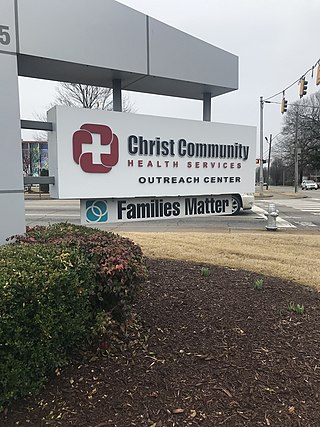
Christ Community Health Services, often referred to as Christ Community, or Christ Community Health, is a nonprofit, Christian, faith-based, healthcare provider with several locations across the Memphis, Tennessee area founded in 1995. Christ Community Health Services is officially classified as a federal qualified health center (FQHC). Christ Community Health Services aims at providing affordable healthcare to the homeless and low-income individuals in communities throughout Memphis. Dental care, physical care, and counselling are some of the several services provided by Christ Community. Shantelle Leatherwood is the current chief executive officer of Christ Community Health. In 2011, Christ Community Health Services was involved in a family planning controversy with nonprofit organization Planned Parenthood in which Christ Community replaced Planned Parenthood as the contract holder for free, family planning services in Memphis. Christ Community Health Services has also aided the Memphis community during the Covid-19 pandemic by providing free Covid-19 testing as well as Covid-19 vaccines.
Paul Caulford is a Canadian advocate, academic, and family doctor in Scarborough, Toronto who provides free healthcare to refugees, undocumented migrants and other newcomers who are unable to get healthcare through the formal channels.
Mark Masselli is an American public health leader and community organizer. In 1972, Masselli co-founded Community Health Center (CHC), the largest Federally Qualified Health Center in Connecticut. He has served as CHC's president and CEO since the organization's founding. CHC provides primary care services to more than 150,000 patients at 200 sites across Connecticut. CHC was also integral in setting up and running Connecticut's COVID-19 vaccination sites, administering more than half a million vaccines. Masselli's work conceiving and building CHC is detailed in Peace & Health: How a group of small-town activists and college students set out to change healthcare.



